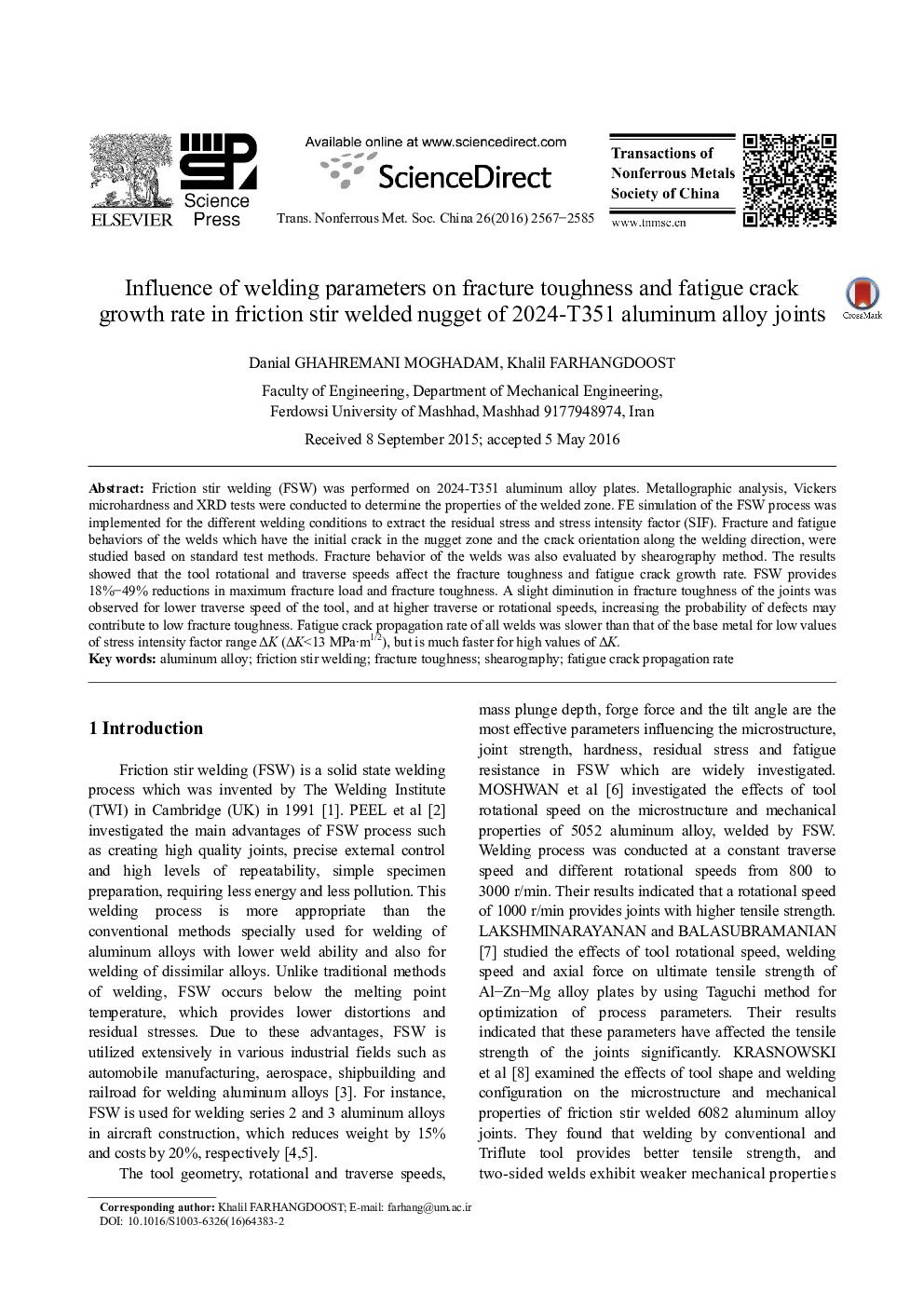| Article ID | Journal | Published Year | Pages | File Type |
|---|---|---|---|---|
| 8012171 | Transactions of Nonferrous Metals Society of China | 2016 | 19 Pages |
Abstract
Friction stir welding (FSW) was performed on 2024-T351 aluminum alloy plates. Metallographic analysis, Vickers microhardness and XRD tests were conducted to determine the properties of the welded zone. FE simulation of the FSW process was implemented for the different welding conditions to extract the residual stress and stress intensity factor (SIF). Fracture and fatigue behaviors of the welds which have the initial crack in the nugget zone and the crack orientation along the welding direction, were studied based on standard test methods. Fracture behavior of the welds was also evaluated by shearography method. The results showed that the tool rotational and traverse speeds affect the fracture toughness and fatigue crack growth rate. FSW provides 18%-49% reductions in maximum fracture load and fracture toughness. A slight diminution in fracture toughness of the joints was observed for lower traverse speed of the tool, and at higher traverse or rotational speeds, increasing the probability of defects may contribute to low fracture toughness. Fatigue crack propagation rate of all welds was slower than that of the base metal for low values of stress intensity factor range ÎK (ÎK<13 MPa·m1/2), but is much faster for high values of ÎK.
Keywords
Related Topics
Physical Sciences and Engineering
Materials Science
Metals and Alloys
Authors
Danial GHAHREMANI MOGHADAM, Khalil FARHANGDOOST,
